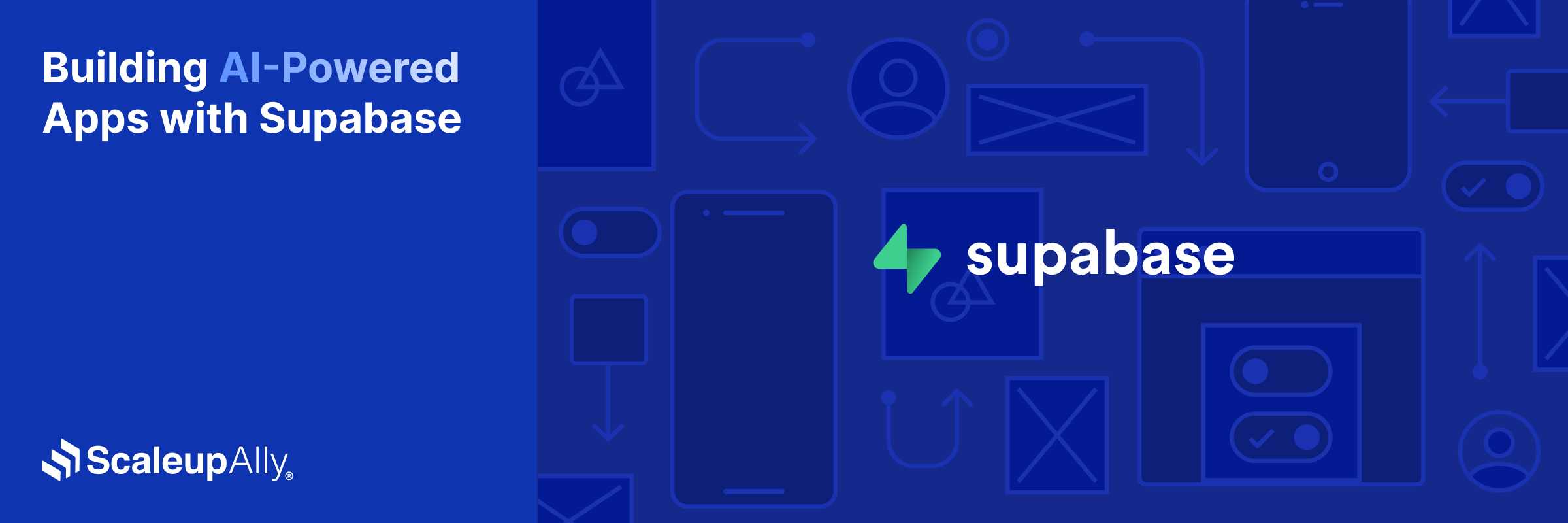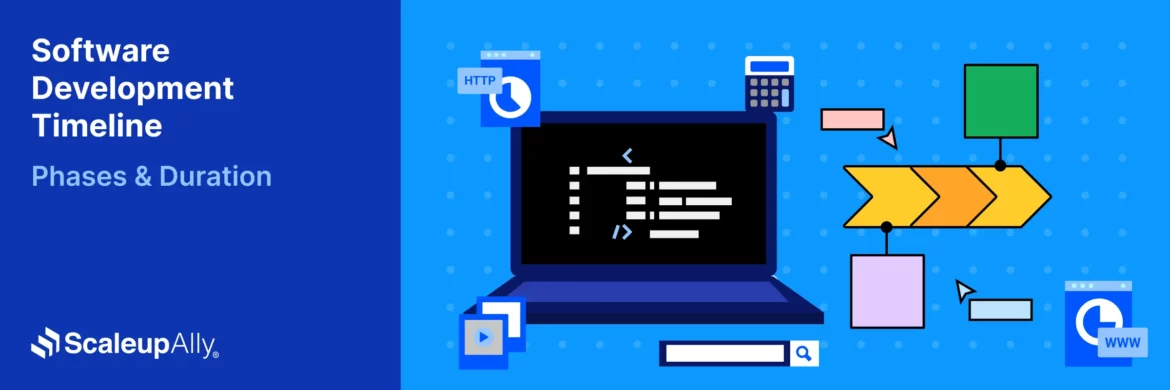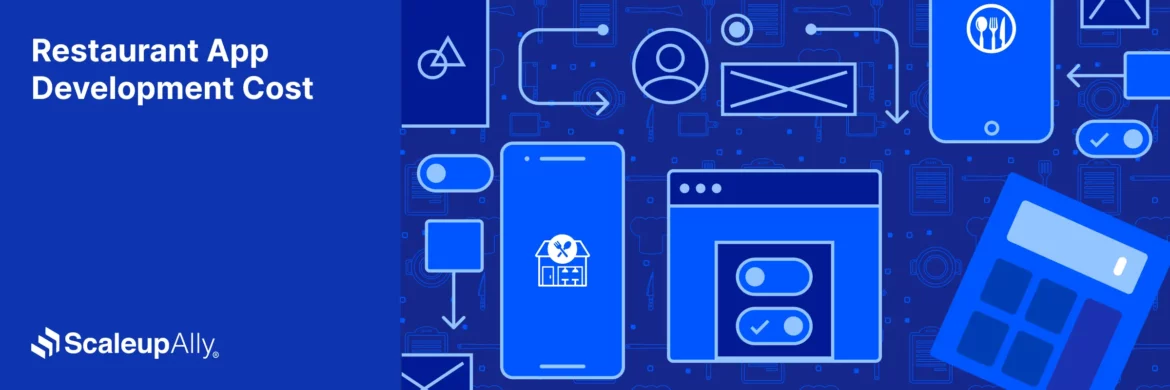
Building AI-Powered Apps with Supabase in 2025
ScaleupAlly Team | November 21, 2025 , 9 min read
Table Of Content
With the rapid advancement of generative AI and the growing presence of large language models (LLMs), we’re witnessing a significant shift in how applications are developed across the globe. These AI technologies are revolutionizing the software landscape, making development faster, smarter, and more scalable than ever before.
In this blog post, we’ll explore how Supabase is playing a key role in this transformation, particularly in the realm of building AI-powered applications.
Why Supabase for AI Development in 2025?
Supabase entered with rapid growth globally and nowadays it’s the most popular in BaaS (Backend-as-a-service) platforms. Unlike Firebase, it has some features like being an open-source, SQL based and user friendly enterprise.
Below are some points which show how it fits best with AI-powered applications.
- Supabase Edge Functions – It has functionality of Serverless functions which is deployed globally. It is also considered ideal for using AI inferences and pre-processing of data for end users.
- Supabase Realtime – This feature provides the connectivity with AI assistants, chatbots, dashboards and enables real-time collaboration with such features.
- Supabase Storage – One of the very good features in tech requirements. to fuel up AI workflows, Supabase is having s3-compatibility, it helps in managing and serving files, images, and documents. It also has a thumbs up for features like image resizing, uploading large files etc. it has also integrated with RLS i.e. row level security useful in access controlling.
- Postgres Database – Postgresql is considered as the solid backbone of Supabase. It has scalability and offers relational structures. pgvector is one of the advanced extensions used for AI embeddings.
- Supabase Auth – So, Authentication is again one of the important and crucial terms where security is needed. Supabase for auth provides secure and authenticated work flow like – emails, social logins, magic links, SSO etc.
- AI Integrations – Supabase provides full Support when integrating AI usage and helps in connectivity with API like OpenAI, Anthropic, Hugging face etc.
- Support for Edge Computing – Supabase Edge Functions is globally distributed which also helps in low level latency of AI models.
Core Features of Supabase for AI Apps
In this section, we’ll highlight some key features that are essential when it comes to building AI-powered applications using Supabase. These elements often play a critical role in ensuring the app is efficient, scalable and capable of handling complex AI workloads.
1. Postgres Database and pgvector connection
- pgvector has the populated functionality for searching, this is similar to vector search which can be used for embedding from LLMs.
- It supports Retrieval-Augmented Generation (in short RAG) pipelines. RAG system is basically an AI architecture which uses Supabase and PostgreSQL database with vector capabilities to get relevant data and save it into a Large-language Model (or LLMs) to get more accurate and context-rich responses.
- It has a vector database to store data and then perform semantic searches, helps in enhancing LLMs capability to answer questions correctly without lagging.
- Connectivity with SQL makes it simple and reduces loads of developers.
- Features like recommendation of engines, powered chatbots etc enhances the ability of Supabase to perform well and support to get expected results.
2. Supabase Edge Functions
- This scalable and secure feature of Supabase makes it easy and reduces the need for manual infrastructure management.
- Considered an ideal option for integrating with AI APIs which allows integrating with AI directly using serverless functions and hence provides low-latency execution.
3. Supabase Auth
- Authentication within Supabase functionality is secure and easy to manage for users and enterprises.
- It supports OAuth, JWT tokens and Single Sign-On (SSO) integrations as a part of its Authentication service.
- While protecting AI apps, it ensures data privacy and compliances.
4. Supabase Storage
- This is an open source, which is S3 compatible in nature and provides object storage services like images, documents, user-uploaded media files or some Generated content and datasets.
- Provide built-in access control having integrations with Supabase Authentication.
5. Supabase Realtime
- Supabase Realtime is a powerful feature that helps in enabling synchronization Real-time data, real-time dashboards and live AI assistants also.
- Communication and syncing process is instant between users and backend applications within Supabase services.
Steps to Build an AI App using Supabase
Below is a simple roadmap you can follow to easily build an AI-powered application using Supabase:
Step 1: Set up a new Supabase Project
- Go to the Supabase dashboard, create a project.
- You can see pgvector extension, Initialize Postgres database with these extensions.
- Set configuration of Supabase Auth for secure user accessibility.
Step 2: Define Data Schema and structure
- Use SQL to structurize user profiles, interactions and connectivity, AI based outputs.
- You can add vector columns for embedding purposes.
- Check for RLS ie Row-Level Security, Implement RLS for compliances
Step 3: Connection with AI API
- Integrate AI APIs like – OpenAI, Anthropic or Hugging Face with Supabase Edge Functions.
- For example – lets say a chatbot app uses GPT-4 or GPT-4o for fetching responses, manages and stores embeddings in Postgres database and uses pgvector for semantic searches.
Step 4: Implement Retrieval-Augmented Generation feature
- First store your media, files or documents in the Storage of Supabase
- Use AI (OpenAI or Hugging Face) to Generate embeddings.
- Make Query for embedding in Postgres to fetch context before passing it to LLMs
Step 5: Add real-time data
- Enable Supabase real-time for accessing live chatbots or collaboration with AI tools.
- For example: A real-time AI writing and managing assistant that keeps a sync across various user devices.
Step 6: Deployment and scale
- Deploy Supabase created Edge Functions for interference of pipelines.
- To make low-latency AI responses, use edge computing and caching methods.
- Keep a check and monitor usage and scale value with Supabase enterprise plans.
Integrating Supabase with AI APIs
Supabase by itself doesn’t include built-in AI capabilities. Instead, it relies on external AI APIs to handle the intelligence part of your application.
Think of Supabase as the backend infrastructure—it manages your data, authentication, and server-side logic—while the external AI APIs provide the smart features.
When combined, they work seamlessly to create a fully functional AI-powered application.
OpenAI Integration
- Integrating AI like Using GPT models for various purposes say text, chatbots or generating code
- Manage and store prompts, completing and embeddings data in PostgreSQL.
Anthropic Integration
- To automate workflows, access Claude models for safety and allow for powerful AI driven applications and responses.
- Building applications which are more focused on compliances.
Integrating Hugging Face
- Hugging face has a model hub using which it can provide access to many pre-trained models and deploy them. For Example, speech, text generation and creating summary, generating image etc.
- It can easily connect with supabase storage with its custom model as a part of the dataset hub.
AI Workflow and its examples
- When user uploads a file like PDF and keep it stored in supabase storage
- Fetching text and generate embeddings with the help of OpenAI
- Flow of RAG into pipeline, query embeddings and sending context to LLMs
- Store embedding in pgvector or Postgresql
- Use supabase realtime feature to get realtime intelligent answers in Return.
Use Cases of AI-Powered Apps with Supabase
Many businesses are leveraging Supabase to build powerful AI-driven solutions. The platform’s flexibility and robust features make it an excellent choice for integrating with AI technologies.
Below are a few ways in which the connection between AI applications and Supabase can continue to evolve and grow:
- AI Chatbots and Virtual Assistants
Supabase AI Assistants is a smart companion for managing postgres databases, AI chatbot provides a chat and message system which is quite a convenient option for customers. In supabase, agents powered by RAG are having context-aware and best support which makes chatbot a good choice for users. It has a realtime feature for providing instant communication.
- AI-Enhanced SaaS Platforms
It helps in making workflows automatic with Supabase edge Functions with AI APIs. for Example- AI supported dashboard with predictive analytics and graphs.
- Content Generation Tools
To prepare good and transformed content, use of generative AI to create content writing, blogs, visuals etc is a very supportive tool. After creation of your generative media, you can manage your storage in supabase storage.
- Personalized Recommendations
Provides realtime updates for your personal experiences like AI based eCommerce platform using searching or adding option of vector search.
- Healthcare & Finance Applications
Involving RLS and Authentication processes for secure and compliant data handling. For example- to keep patients records or financial analysis management using AI Assistants.
Challenges & Limitations
While Supabase is a strong choice as a BaaS platform, there are still a few considerations that businesses should keep in mind:
- Complex processings, self-hosting challenges, Vendor lock-in potential, incomplete documentations etc.
- Costing AI APIs like running LLMs, OpenAI, Anthropic is sometimes a bit expensive based on the usage.
- Users at global level may face some delays, however, edge Functions in Supabase helps in reducing latency.
- Vector search (pgvector) is a powerful tool but in case of large datasets, needs indexing or optimization
- For handling sensitive data, adherence to data Privacy regulations for personal data protection is needed
- Although Supabase offers integrated flexibility, dependencies on third party tools or APIs are still a Limitation factor.
Conclusion
As a BaaS platform, building AI-powered applications with Supabase gives developers a powerful combination of features—SQL reliability, uninterrupted real-time data handling, and smooth integration with AI APIs.
Whether you’re developing RAG chatbots or enterprise-grade SaaS automation tools, Supabase offers a secure, scalable, and comprehensive framework for creating future-ready AI solutions.
Frequently Asked Questions
Q: Can Supabase handle vector search for AI embeddings?
Yes, Supabase’s PostgreSQL setup supports pgvector, which allows for efficient and functional vector search. This includes capabilities like semantic search, Retrieval-Augmented Generation (RAG) pipelines, and AI-powered recommendation systems.
Q: How do I integrate OpenAI or Anthropic with Supabase?
Supabase offers Edge Functions that allow you to call AI APIs like OpenAI or Anthropic. To complete the workflow, Supabase uses PostgreSQL to store results and then combines them with real-time data capabilities.
Q: What are the costs of building AI Apps on Supabase?
The cost isn’t fixed—it depends on factors such as the use of AI APIs, number of tokens processed, inference calls and data or file storage. For large workloads, higher pricing may apply.
Q: Is supabase scalable enough for enterprise-level AI applications?
Yes, Supabase offers horizontal scalability with PostgreSQL, supports service-level agreements (SLAs) and provides Edge Functions to handle demanding workloads—making it well-suited for enterprise-scale applications.
Author Spotlight
Kiran Saklani, Software Engineer
Related Blogs

Online Shopping App Development Cost in UAE | Pricing & Factors Explained
Understand UAE online shopping app development costs in 2025 with pricing ranges, influencing factors, hidden fees, timeframes, and expert savings tips.
Suprabhat Sen
Nov 29 ,
13 min read

Software Development Timeline: Phases, Duration & Estimation Guide
Understand the software development timeline with phase durations, key factors, hidden delays, and practical methods to estimate project time.
Suprabhat Sen
Nov 29 ,
16 min read

Restaurant App Development Cost [Breakdown, Key Factors & Pricing Explained]
Discover restaurant app development cost. Explore pricing by complexity, feature-wise cost breakdown, and smart ways to reduce expenses.
Suprabhat Sen
Nov 29 ,
11 min read


